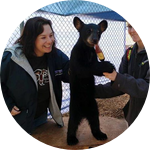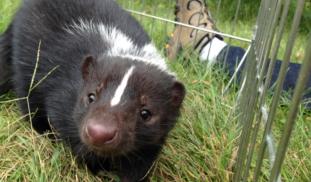Please wait...
About This Project
Striped skunks have foraging habits that may indicate strong problem-solving skills. To understand the evolution of intelligence, I'm testing their knowledge of how objects support each other. I’ve learned that skunks can solve problems by memorizing visual cues, rather than understanding how something works. But I have one question left: is the skunk that learned to pull supportive slats smarter than the two who did not, or did different task demands limit the skunks’ cognitive resources?





